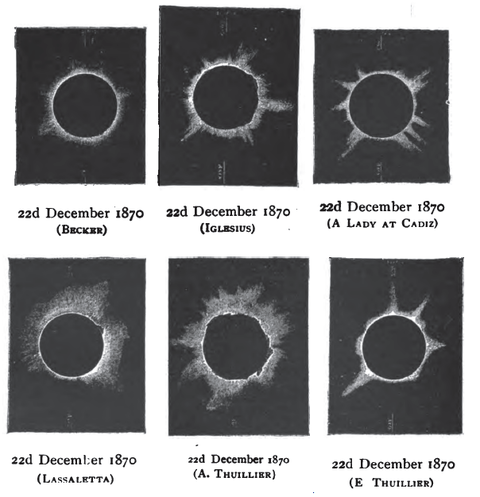Solar eclipse of December 22, 1870
| Solar eclipse of December 22, 1870 | |
|---|---|
| Type of eclipse | |
| Nature | Total |
| Gamma | 0.8585 |
| Magnitude | 1.0248 |
| Maximum eclipse | |
| Duration | 131 sec (2 m 11 s) |
| Coordinates | 35°42′N 1°30′W / 35.7°N 1.5°W |
| Max. width of band | 165 km (103 mi) |
| Times (UTC) | |
| Greatest eclipse | 12:27:33 |
| References | |
| Saros | 120 (53 of 71) |
| Catalog # (SE5000) | 9213 |
A total solar eclipse occurred on December 22, 1870. A solar eclipse occurs when the Moon passes between Earth and the Sun, thereby totally or partly obscuring the image of the Sun for a viewer on Earth. A total solar eclipse occurs when the Moon's apparent diameter is larger than the Sun's, blocking all direct sunlight, turning day into darkness. Totality occurs in a narrow path across Earth's surface, with the partial solar eclipse visible over a surrounding region thousands of kilometres wide. Totality was visible from southern Portugal and Spain, across northern Algeria, then crossing Sicily, Greece, Bulgaria, and ending in Ukraine.

From Syracuse by Captain G. L. Tupman, R.M.A.
It is a part of solar Saros 120.
...
Wikipedia


